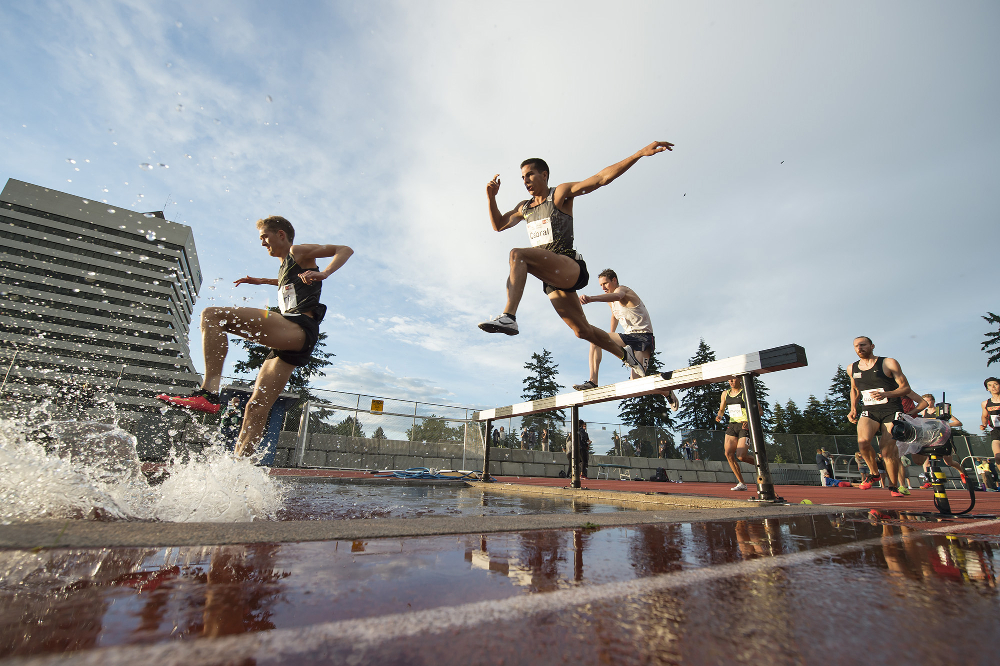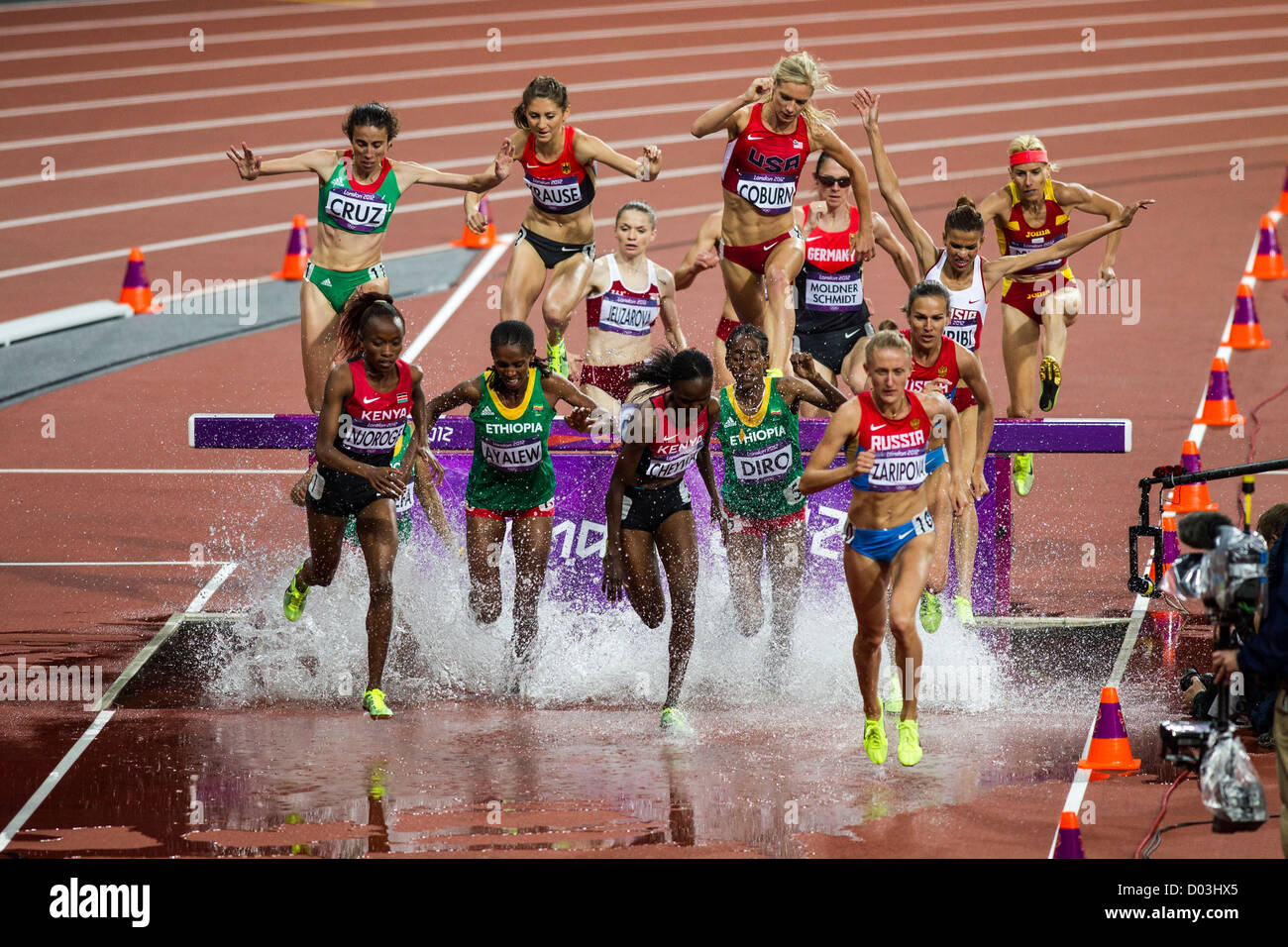History of the 3000m Steeplechase at the Olympics

The 3000m steeplechase has been a part of the Olympic program since 1920, evolving over the years in terms of rules, distances, and the athletes who have dominated the event. This grueling race, combining speed, endurance, and technical skill, has captivated audiences with its thrilling spectacle and the incredible feats of its competitors.
Evolution of the 3000m Steeplechase at the Olympics
The 3000m steeplechase has undergone a series of changes since its inception at the Olympics. Initially, the distance was 3000 meters, with 28 hurdles and 7 water jumps, a setup that was significantly different from the modern version. In 1924, the number of hurdles was reduced to 28, and the distance remained at 3000 meters. However, the number of water jumps was reduced to 7, and the height of the hurdles was increased to 91.4 centimeters. The current 3000-meter distance with 28 hurdles and 7 water jumps was established in 1956.
Legendary Athletes of the 3000m Steeplechase
The 3000m steeplechase has been graced by some of the greatest athletes in history. Here are some of the most notable figures who have dominated the event:
- Vladimir Kazantsev (Soviet Union): Kazantsev won gold at the 1980 Moscow Olympics, setting a new Olympic record of 8:09.17. His powerful running style and smooth water jump technique made him a formidable competitor.
- Julius Achon (Uganda): Achon, a Ugandan runner, won the bronze medal at the 1996 Atlanta Olympics. He was the first African athlete to win an Olympic medal in the 3000m steeplechase, and his accomplishment was a testament to his determination and talent.
- Saif Saaeed Shaheen (Qatar): Shaheen, originally from Kenya, holds the world record in the 3000m steeplechase with a time of 7:53.63. He won the gold medal at the 2003 World Championships and the 2004 Athens Olympics, showcasing his exceptional speed and endurance.
- Conzelus Kipruto (Kenya): Kipruto, a Kenyan runner, has dominated the 3000m steeplechase in recent years. He won the gold medal at the 2016 Rio Olympics and the 2019 World Championships, setting a new Olympic record of 8:03.28 in Rio.
Impact of the 3000m Steeplechase on the Olympic Program
The 3000m steeplechase has become a highly popular and competitive event at the Olympics, attracting a large audience and showcasing the athleticism and skill of the world’s best runners. The event’s popularity has contributed to the overall growth and excitement of the Olympic program, providing a unique and thrilling spectacle for spectators. The 3000m steeplechase has also helped to promote the sport of track and field on a global scale, inspiring a new generation of athletes.
Technical Aspects of the 3000m Steeplechase

The 3000m steeplechase is a grueling and technical event that requires a unique blend of speed, endurance, and agility. Athletes must navigate a series of hurdles and water jumps while maintaining a high pace, making it a truly demanding test of physical and mental strength.
Techniques for Overcoming Barriers
The water jump and hurdle barriers are integral parts of the 3000m steeplechase, and athletes employ specific techniques to overcome them efficiently.
- Water Jump: The water jump is arguably the most challenging obstacle. Athletes typically approach the jump with a strong stride, aiming to clear the water with a powerful leap. The goal is to maintain momentum and minimize the time spent in the water. The key is to land firmly on the other side, avoiding unnecessary splashing and ensuring a smooth transition back into running.
- Hurdle Barriers: The hurdle barriers are tackled using a similar approach to other running events. Athletes aim for a rhythmic stride pattern, clearing the hurdles with a high knee drive and a strong push-off. The focus is on maintaining speed and minimizing disruption to their running rhythm.
Pacing, Endurance, and Speed
The success of a steeplechase runner hinges on a delicate balance between pacing, endurance, and speed.
- Pacing: A well-executed pacing strategy is crucial. Athletes typically start at a moderate pace, gradually increasing their speed throughout the race. The goal is to conserve energy for the final laps, where the intensity of the competition intensifies. The ability to maintain a consistent pace over the entire distance is essential for success.
- Endurance: The 3000m steeplechase is a demanding test of endurance. Athletes must be able to sustain a high level of effort for an extended period, while also navigating the obstacles. The ability to maintain a consistent pace and minimize fatigue is paramount.
- Speed: While endurance is critical, speed is also a crucial factor. Athletes must be able to accelerate quickly over the final laps to outpace their competitors. The ability to generate bursts of speed during the latter stages of the race is a key advantage.
Biomechanics of the 3000m Steeplechase
The biomechanics of the steeplechase involve a complex interplay of muscle groups and movements.
- Muscle Groups: The steeplechase demands strength and endurance in various muscle groups, including the legs, core, and upper body. The quadriceps, hamstrings, and glutes are heavily involved in generating power for running and jumping. The core muscles play a vital role in maintaining stability and balance during the race, especially when navigating the obstacles. The upper body muscles, including the shoulders and arms, contribute to overall power and momentum.
- Movements: The steeplechase involves a wide range of movements, including running, jumping, and hurdle clearance. The running motion requires a coordinated effort from the legs, core, and upper body. The jumping technique for the water jump involves a powerful extension of the legs and a strong push-off. The hurdle clearance technique involves a high knee drive and a forceful push-off from the ground.
Recent Trends and Future Prospects of the 3000m Steeplechase: 3000m Steeplechase Olympics

The 3000m steeplechase is a grueling event that requires a unique blend of speed, endurance, and technical skill. In recent years, the sport has seen significant advancements in training methodologies and technological innovations, leading to new records and pushing the limits of human performance. The emergence of new athletes and the changing landscape of the sport create exciting possibilities for the future of the steeplechase at the Olympics.
Training Innovations and Technological Advancements, 3000m steeplechase olympics
The training strategies employed by elite steeplechasers have evolved considerably. Athletes now utilize cutting-edge technology and scientific approaches to optimize their performance.
- Data-Driven Training: Wearable technology, such as GPS trackers and heart rate monitors, provides athletes and coaches with real-time data on training intensity, pace, and recovery. This data allows for personalized training plans tailored to individual strengths and weaknesses.
- Strength and Conditioning: Focus on strength training has become more sophisticated, incorporating exercises designed to improve leg power, core strength, and overall stability, essential for navigating the obstacles and maintaining a strong running form.
- Biomechanics Analysis: Advanced biomechanical analysis helps athletes optimize their running technique and water jump form. By studying the movement patterns of successful steeplechasers, coaches can identify areas for improvement and implement specific drills to enhance efficiency and reduce the risk of injuries.
- Altitude Training: Training at high altitudes has become increasingly popular as it enhances red blood cell production, leading to improved oxygen uptake and endurance. This approach has proven effective for athletes competing in endurance events like the steeplechase.
Current Landscape of Top Athletes
The current generation of steeplechasers boasts a diverse range of athletes with unique strengths and weaknesses.
- Conserative Running Style: Some athletes excel at maintaining a consistent pace throughout the race, relying on their strong endurance base to outlast their opponents. These athletes may not be the fastest starters but often finish strong.
- Aggressive Front-Running: Other athletes prefer to take the lead early, setting a fast pace and forcing their competitors to chase. This strategy requires exceptional speed and the ability to maintain a high level of intensity over a sustained period.
- Technical Prowess: Success in the steeplechase also depends on mastering the technical aspects of the event, particularly the water jump. Athletes with a smooth and efficient water jump technique can gain a significant advantage over their competitors, saving valuable time and energy.
Future Prospects of the 3000m Steeplechase
The 3000m steeplechase is poised for continued growth and popularity at the Olympics.
- Increased Participation: The event is attracting a growing number of young athletes, fueled by the inspiring performances of current top runners and the increased accessibility of training resources.
- Technological Advancements: Further advancements in training technology will likely lead to even faster times and more competitive races. The development of new materials for footwear and apparel could also enhance performance and reduce the risk of injury.
- Global Reach: The steeplechase is gaining popularity in new regions of the world, expanding the talent pool and increasing the global appeal of the event. This trend suggests a more diverse and competitive field at future Olympic Games.
3000m steeplechase olympics – The 3000m steeplechase is a spectacle of endurance and agility, a dance with water barriers and a test of grit. The 2020 Tokyo Olympics saw a shocking turn of events when Lamecha Girma, a rising star, fell dramatically just moments before the finish line.
This unexpected twist in the race left the audience stunned and underlined the fragility of even the most well-prepared athlete, a stark reminder that victory in the 3000m steeplechase is never guaranteed.
The 3000m steeplechase at the Olympics is a grueling test of endurance and strategy, where athletes must navigate water jumps and hurdles while maintaining a blistering pace. Ethiopia, known for its steeplechase dominance , has consistently produced world-class runners who have left their mark on this challenging event.
The roar of the crowd as an Ethiopian athlete crosses the finish line, a testament to their relentless pursuit of victory, is a defining moment in the Olympics.